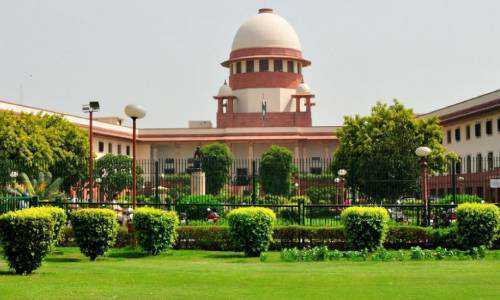
For the purpose of determining the deadlines for using legal remedies given under various statutes, the Supreme Court has defined the interaction between the Limitation Act and other acts on a number of occasions. The Insolvency and Bankruptcy Code 2016 ("IBC") is one of these acts, and as a result of an amendment, Section 238A was added, making the Limitation Act relevant to the provisions of IBC. The Supreme Court has once again clarified the applicability of the Limitation Act to the provisions of the IBC in the case of Babulal Vardharji Gurjar v. Veer Gurjar Aluminium Industries Pvt. Ltd., despite the fact that a number of cases have been decided on the issue of limitation ("Judgement") 3. The judgement was made when deciding a case involving the acknowledgement of a debt obligation that was secured by a mortgage.
In the instant case titled Babulal Vardharji Gurjar v. Veer Gurjar Aluminium Industries Pvt. Ltd. The issue raised for clarification before the Supreme Court was:Whether the application filed by Respondent No. 2 under Section 7 of IBC is invalid due to limitation or not?
The Supreme Court additionally noted that although the Innoventive Industries Case provided a good overview of the goals and plans of IBC, there was still disagreement about whether the Limitation Act should be applied to its provisions. As a result, the Insolvency Reforms Committee's Report recommended amending the IBC, adding a new Section 238A, which made the Limitation Act relevant to actions brought under the IBC. However, Section 238A of the IBC was also challenged before the Supreme Court, and in the B.K. Educational Services Case, the Supreme Court ruled that if an application under the IBC has been filed for a default that is older than three years, then the application has been filed for a default that is older than three years.
The Court also made reference to the conclusions made in the K. Shashidhar Case, which determined that Section 238A of the IBC, which is procedural and clarifying in nature, must take effect retroactively. The Court further stated that, as was done by NCLAT, the Vashdeo R. Bhojwani Case8 had rejected the applicability of Section 23 of The Limitation Act 1908 in proceedings brought under IBC while coming to the conclusion that no period of limitation would be triggered in the case where the default was continuous in nature. The Court went on to say that it had also disregarded NCLAT's conclusions in the Gaurav Hargovindbhai Dave Case, in which NCLAT had noted that the statute of limitations would begin to run on the day the IBC went into effect, or 01.12.2016. In this situation, the court had noted that the limitation period would begin on the day the corporate debtor's loan account was designated as a non-performing asset (NPA). The Supreme Court also ruled in the aforementioned case that the limitations period of 12 years provided by Article 62 of the Limitation Act would not apply to the provisions of the IBC since it only applies to the enforcement of mortgage liability.The Supreme Court determined that just two factors need to be addressed by applying the rules established in the aforementioned instances. The first is whether Section 18 of the Limitation Act applies to actions brought under IBC, and the second is the impact of the Court's findings in the Jignesh Shah Case. The Court discussed the case's facts and went on to state that in the Jignesh Shah Case, the reference to Section 18 of the Limitation Act has only been made by the Court in relation to suit, while observing that the contending parties on both sides have relied on the law established in the Jignesh Shah Case.
Even if one assumes that Section 18 of the Limitation Act applies to the current case, the Court ruled that such a clause cannot be read in Respondent No. 2's favour. The Court reasoned that the loan accounts of Respondent No. 1 were declared NPA on August8, 2011, which is the date Respondent No. 2 stated as the date of default in its Section 7 Application. The Respondent No. 2 never asserted a claim in relation to any other date of default by way of an admission of liability, and the Court went on to say that even Section 18 of the Limitation Act is not applicable in the facts of the case. The NCLAT's decision to use the IBC's implementation date as the beginning of the statute of limitations has also drawn criticism from the Court, despite the fact that this position has already been determined to be nonsensical, as stated in the Sagar Sharma Case. The Court further observed that in circumstances where an application has been filed under Section 7 of IBC, it has remained unclear how NCLAT and the lower tribunals have been treating the limitations clauses related to the execution of a mortgage deed. The court stated that no provision other than Article 137 of the Limitation Act will be applicable on an application filed under Section 7 of the Limitation Act because of the clear ruling in the B.K. Educational Services Case.The Court categorically stated that,
"It remains trite that the question of limitation is essentially a mixed question of law and facts and when a party seeks application of any particular provision for extension or enlargement of the period of limitation, the relevant facts are required to be pleaded and requisite evidence is required to be adduced."The Impugned Order was annulled by the Supreme Court after accepting the appeal. The Supreme Court has declared invalid all of the actions performed in connection with the aforementioned Application made pursuant to Section 7 of the IBC, including the implementation of the moratorium and the appointment of an Interim Resolution Professional.

